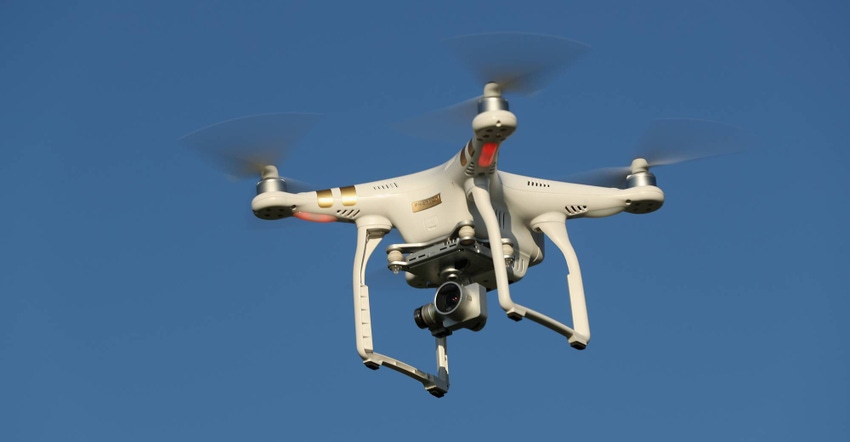November 1, 2016

The drone may become an essential piece of tech equipment on the farm. There are some specific scouting tasks these machines can do for farmers that allow them to get information and put it to work. And with the holidays approaching, we expect a lot of farmers will have an unmanned aerial vehicle on their wish list. Here is information — and news — about drones you can use.
A new data plan for drones
When a drone is flying, it collects imagery — whether visual or multispectral — and getting that imagery from airship to computer can sometimes be complicated. Many systems are using public wireless frequencies for communication, but Verizon apparently wants to get involved.
The company has announced it will soon start offering data plans for drones. With a cellular chip on your drone, you could do more than transmit images, according to reports from the Wall Street Journal. The system could also help you fly the machine with greater reliability.
The idea of a data plan for your drone may take some getting used to, and Verizon will be on the hook to share just how that plant will offer a payback for your farm. However, improved data reliability could be a key benefit — depending on how Verizon approaches the market.
Right now pricing is listed at $25 for 1 gigabyte of data transfer. And there’s talk of a 10-gig plan at $80 per month. It’s up to the company to justify the cost and provide real-world benefits.
Keeping the rules in mind
The new FAA rules for flying drones make it possible for farmers to really get into the act. You no longer have to be a pilot to fly one of these machines. And you can operate it at 400 feet wherever there aren’t people around — which is most of agriculture.
Here are some other things to keep in mind when operating a drone:
• The new rules cover drones that weigh less than 55 pounds — which limits the use to machines that gather information and none that can be used for applying product. In most cases, on-farm drone use will involve vehicles that are much lighter.
• You can now hire out the work. FAA has lifted the restriction on hiring a consultant to gather information. That allows your crop scout to add drone data acquisition, and frees you up to let a hired-hand operate your airship to gather information.
• Keep that bird in sight. That rule has been a big one for FAA for some time. Precision Hawk has gotten permits to operate its airships at greater distances; however, those are on a case-by-case basis. Main rule: Keep it under 400 feet, and make sure you can see it.
You can learn more at knowbeforeyoufly.org.
About the Author(s)
You May Also Like






